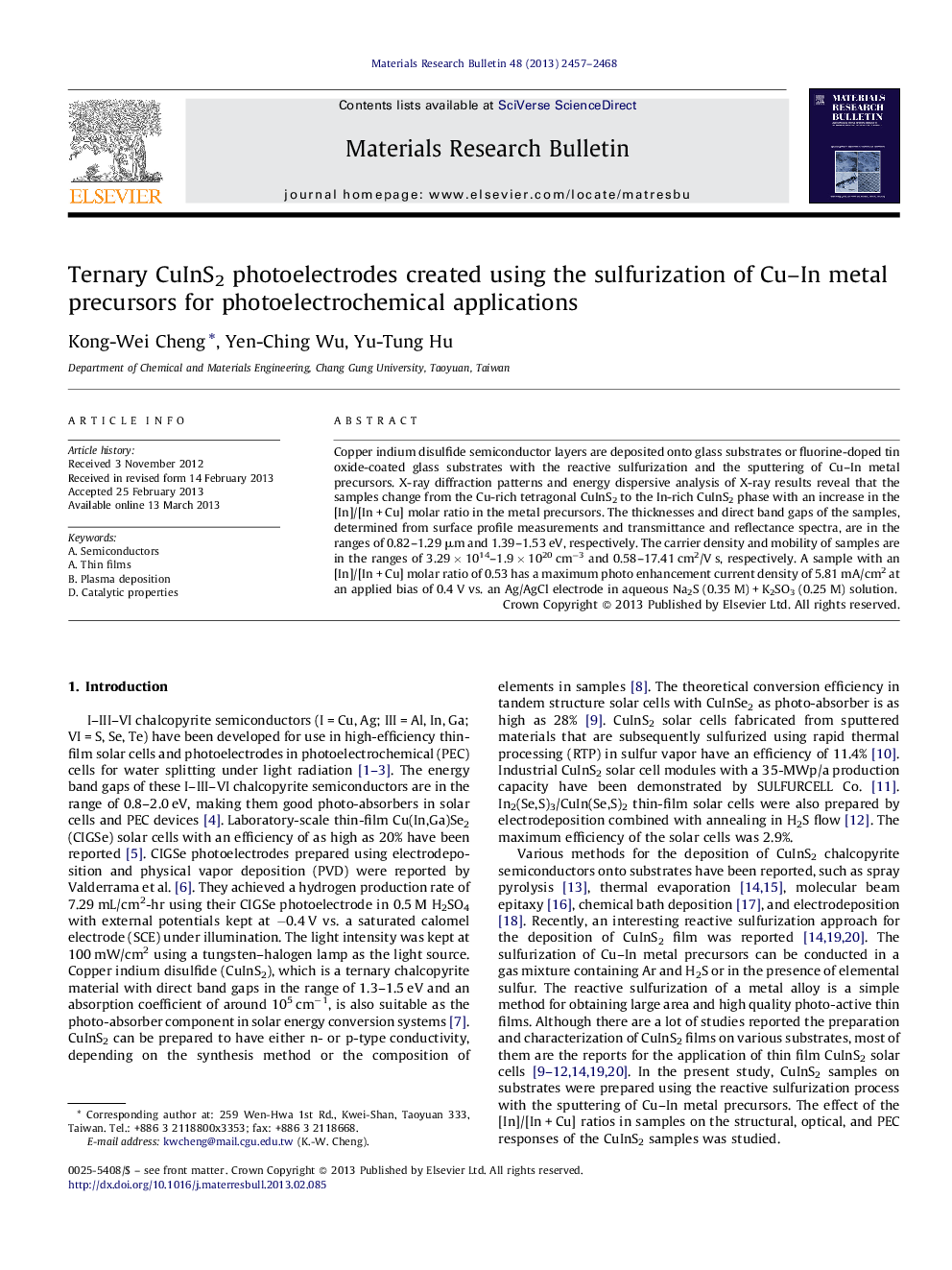| کد مقاله | کد نشریه | سال انتشار | مقاله انگلیسی | نسخه تمام متن |
|---|---|---|---|---|
| 1488758 | 992295 | 2013 | 12 صفحه PDF | دانلود رایگان |

• CuInS2 is deposited on substrates using sulfurization of Cu–In precursors.
• Samples with [In]/[Cu + In] ratio of below 0.49 are p-type semiconductors.
• Samples with [In]/[Cu + In] ratio of above 0.51 are n-type semiconductors.
• Sample with [In]/[Cu + In] ratio of 0.53 has a maximum PEC response.
Copper indium disulfide semiconductor layers are deposited onto glass substrates or fluorine-doped tin oxide-coated glass substrates with the reactive sulfurization and the sputtering of Cu–In metal precursors. X-ray diffraction patterns and energy dispersive analysis of X-ray results reveal that the samples change from the Cu-rich tetragonal CuInS2 to the In-rich CuInS2 phase with an increase in the [In]/[In + Cu] molar ratio in the metal precursors. The thicknesses and direct band gaps of the samples, determined from surface profile measurements and transmittance and reflectance spectra, are in the ranges of 0.82–1.29 μm and 1.39–1.53 eV, respectively. The carrier density and mobility of samples are in the ranges of 3.29 × 1014–1.9 × 1020 cm−3 and 0.58–17.41 cm2/V s, respectively. A sample with an [In]/[In + Cu] molar ratio of 0.53 has a maximum photo enhancement current density of 5.81 mA/cm2 at an applied bias of 0.4 V vs. an Ag/AgCl electrode in aqueous Na2S (0.35 M) + K2SO3 (0.25 M) solution.
At an irradiation of 100 mW/cm2 from a Xe lamp, the highest photo-enhancement current density of sample (f) obtained in this study was 5.81 mA/cm2 at an external potential of +0.4 V vs. an Ag/AgCl electrode in Na2S (0.35 M) + K2SO3 (0.25 M) solution. These results show that the physical properties of CuInS2 can be controlled by changing the [In]/[In + Cu] molar ratio in the metal precursors using the reactive sulfurization process with the sputtering of Cu–In metal precursors.Figure optionsDownload as PowerPoint slide
Journal: Materials Research Bulletin - Volume 48, Issue 7, July 2013, Pages 2457–2468